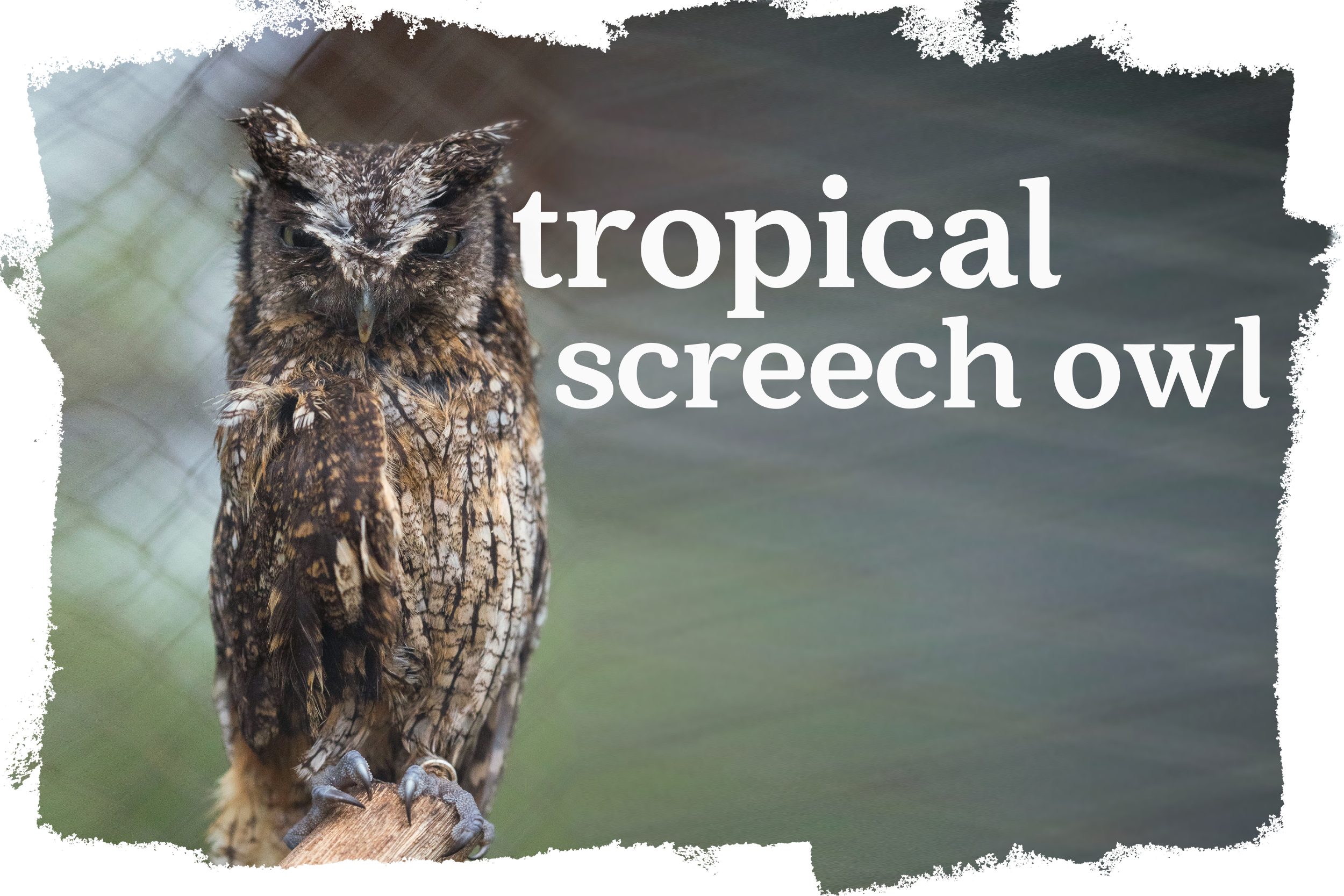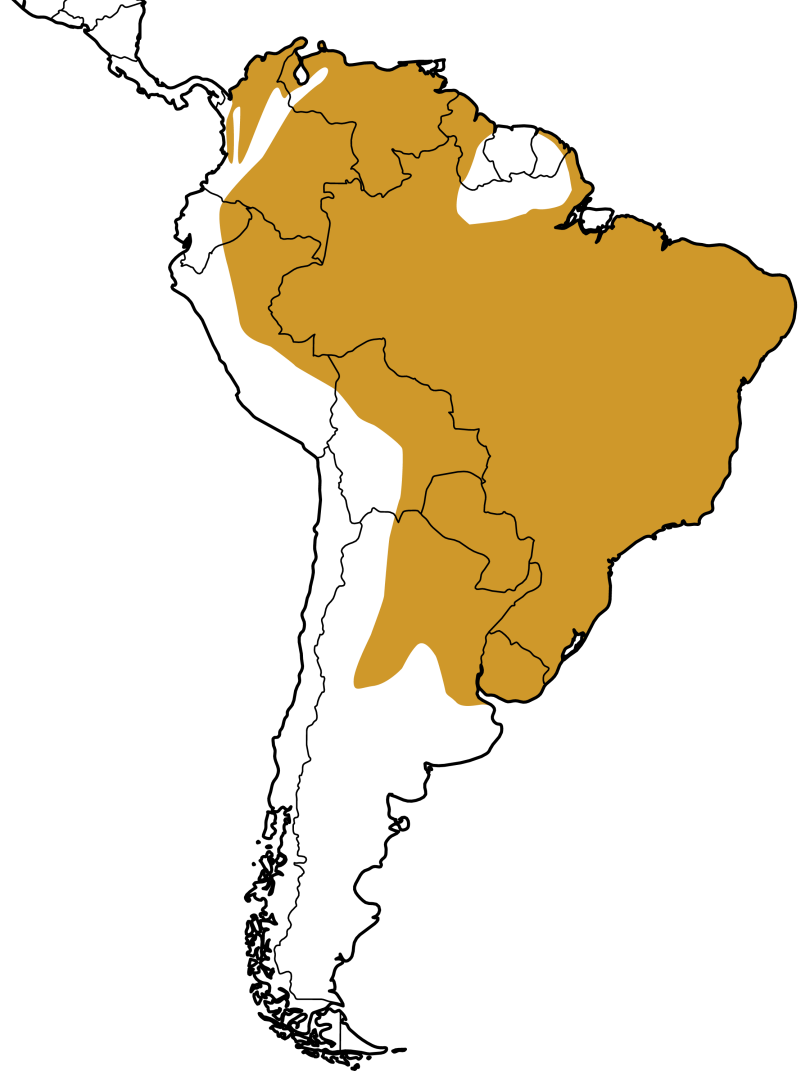

One of the most common owls in cities, parks and on farms. Almost always perches on trees. During the day it shelters in the trunks of dead and rotten trees and builds its nests there.
80g to 196g
20cm and 27cm
20 years in captivity
Important data
MAIN FEATURES
Smaller than the burrowing owl, it has feathers that resemble ears on the sides of its head. It has yellowish eyes and has a light gray face, skirted by black. It has a gray chest with dark, vertical spots. Its back is brownish gray with dark spots.
TOP THREATS
Runover by vehicles on roads it usually hunts on.
DIET
Big insects, such as locusts, and moths. It also eats mice and small birds.REPRODUCTION
It breeds from January to July and lays its eggs in nests from 1m to 3m above the ground, holes in trees. The female incubates one to four eggs and while doing so defends her nest from everything, flying low if approached by enemies.HABITS
● Lives in savannas, forests, clearings, urban parks and tree-lined residential areas.
● Avoids dense forests and prefers warmer climates.
● It is very active in the early evening.
● It can be found on low branches of trees, shrubs, roadsides, fences or even electricity cables.
TRIVIA
During its reproductive period, it vocalizes frequently, screeching like a Cururu toad.
Geographical distribution





